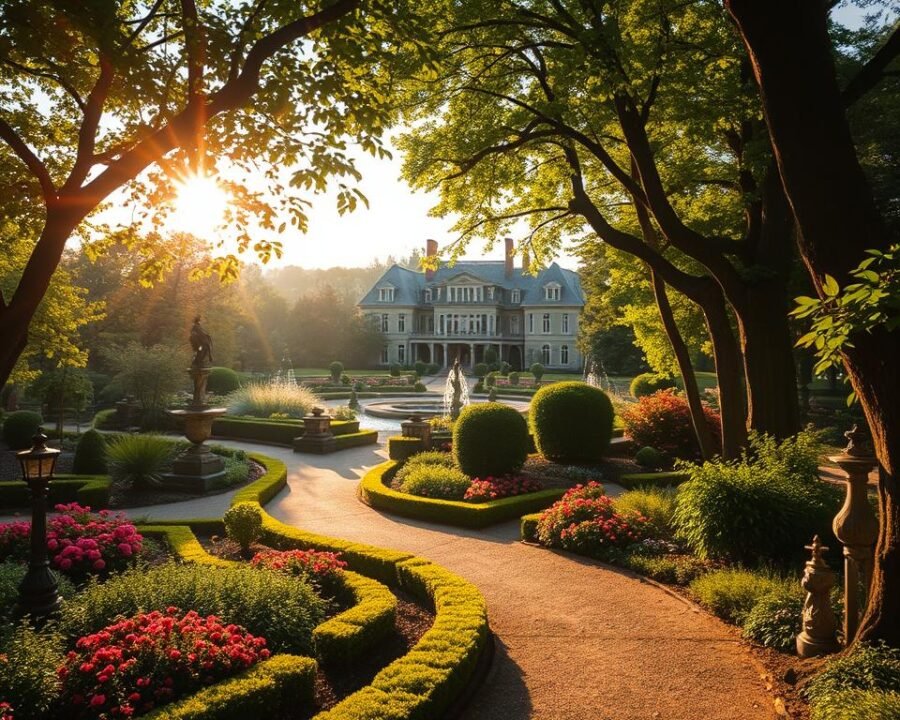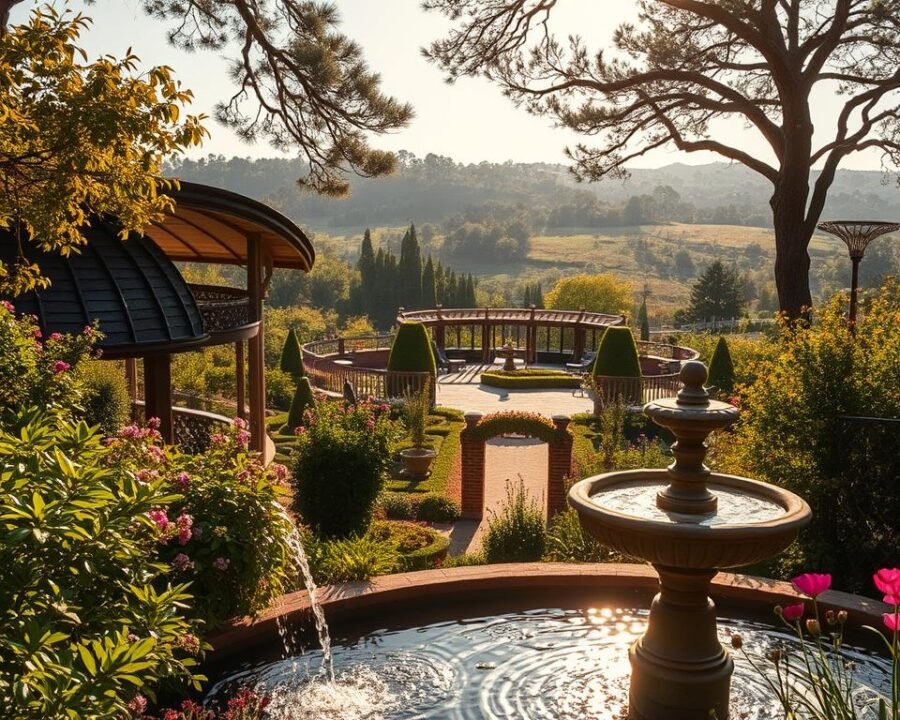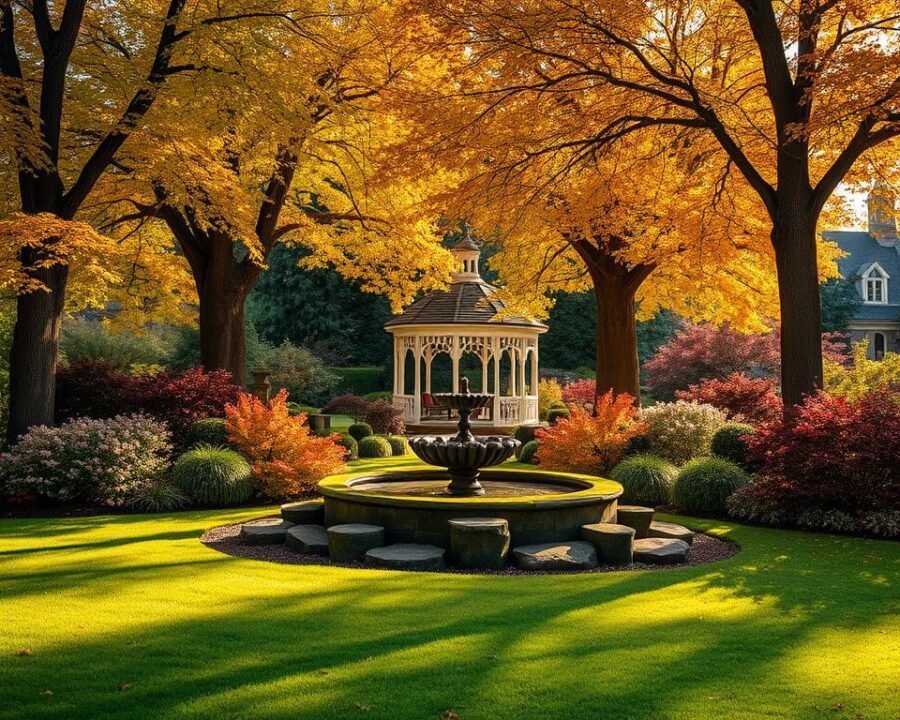Discover Chanticleer Pleasure Garden in Pennsylvania
Have you ever longed for a place where art and nature blend seamlessly? A space that feels intimate yet expansive, offering a retreat from the hustle and bustle of everyday life? Nestled in suburban Philadelphia, the Chanticleer Pleasure Garden is that rare gem. Spanning 35 acres, this horticultural masterpiece invites visitors to immerse themselves in its seasonal beauty, from April through October.
What sets this garden apart is its domestic scale and thoughtful design. Unlike larger public spaces, it feels personal and inviting. As R. William Thomas, the garden’s visionary, once said, “We want our guests to leave in a better mood than when they arrived.” From the enchanting Teacup Garden to the mysterious Ruin, every corner tells a story.
Part of the prestigious America’s Garden Capital network, this destination has earned accolades from The New York Times and 6ABC. Whether you’re seeking relaxation, inspiration, or a picnic spot, Chanticleer offers it all. Located at 786 Church Road, it’s an accessible escape for everyone.
Key Takeaways
- Explore a 35-acre horticultural gem blending art and nature.
- Enjoy an intimate atmosphere distinct from larger public gardens.
- Visit seasonally from April to October for stunning displays.
- Discover unique features like The Ruin and Teacup Garden.
- Located at 786 Church Road in suburban Philadelphia.
- ADA accessible and picnic-friendly for all visitors.
- Recognized by The New York Times and 6ABC for its beauty.
Introduction to Chanticleer Pleasure Garden
Step into a world where history and horticulture come together in perfect harmony. Originally the summer home of the Rosengarten family, this estate was founded in 1912 and has since evolved into a public garden that opened its doors in 1993. Today, it remains a beloved destination for nature lovers and art enthusiasts alike.
What makes this place unique is its intimate, domestic scale. Unlike larger public spaces, it feels like a private retreat. Visitors are greeted with personalized maps, ensuring a welcoming and tailored experience. The garden’s design is divided into distinct “rooms,” each offering a unique atmosphere and story.
Maintained by a dedicated team of 23 full-time gardeners, the grounds are a testament to meticulous care and creativity. In 1984, the estate earned a spot on the National Register of Historic Places, further cementing its cultural significance. Located just 30 miles northwest of Philadelphia on the historic Main Line, it’s an accessible escape for locals and tourists alike.
The concept of a pleasure garden is central to its identity. It’s a space designed to inspire joy and relaxation, where every visit feels like a celebration of nature’s beauty. From seasonal guided tours to free parking, the amenities ensure a seamless and enjoyable experience for all.
| Visitor Amenities | Details |
|---|---|
| Parking | Free and convenient |
| Guided Tours | Seasonal, led by knowledgeable staff |
| Photography Policy | Allowed for personal use |
For more insights into the history and significance of this destination, explore this detailed resource. Whether you’re a first-time visitor or a returning guest, this beautiful garden promises an unforgettable experience.
The History of Chanticleer Pleasure Garden

The story of this horticultural treasure is as rich as its landscapes. What began as a private estate has evolved into a public haven, blending family legacy with visionary design.
The Rosengarten Family Legacy
The Rosengarten family’s journey began with their pharmaceutical empire. Rosengarten & Sons, known for quinine production, laid the foundation for their fortune. Adolph Rosengarten Jr., a key figure, established the Chanticleer Foundation in 1946. His vision ensured the estate’s transformation into a public space decades later.
In 1990, Adolph Jr.’s endowment marked a turning point. The foundation’s mission was clear: preserve the estate’s beauty while making it accessible to all. This philanthropic act set the stage for the garden’s future.
Transformation into a Public Garden
The 1990s brought a radical redesign under Christopher Woods, the head gardener. His philosophy emphasized creativity and intentionality. One of his bold moves was the demolition of a structure to create The Ruin, a modern garden feature that tells a story of decay and rebirth.
Collaboration with architectural firm Zantzinger, Borie, and Medary ensured the estate’s original charm was preserved. The Wollemi Pine, acquired after its discovery in Australia, became a symbol of the garden’s global connections.
In 1984, the estate earned a spot on the National Register of Historic Places. Today, under executive director Bill Thomas’ leadership for over 25 years, the garden continues to thrive. The original Chanticleer House stands as a testament to its enduring legacy.
Exploring the Unique Features of Chanticleer

From modern artistry to serene retreats, this space offers something for everyone. With eight distinct zones, each area tells a story through its design and plant life. Whether you’re drawn to bold architectural statements or quiet corners, there’s a feature that will captivate you.
The Ruin: A Modern-Day Garden Feature
Built in 1999 on the site of an old house, The Ruin is a masterpiece of architectural deception. Its modern stonework mimics the appearance of decay, blending history with innovation. Symbolic elements like skull carvings and a sarcophagus fountain add layers of meaning, inviting visitors to reflect on themes of time and transformation.
The Teacup Garden: A Tranquil Retreat
Tucked away in a hidden courtyard, the Teacup Garden is a peaceful escape. Stone-carved books line the space, adding a whimsical touch. Seasonal floral explosions create a vibrant atmosphere, making it a favorite spot for relaxation and inspiration.
Other highlights include the Asian Woods, planted in 1995 with Korean and Japanese species, and Bell’s Run, where a functional 1940s waterwheel adds charm. The cutting garden’s rebar arches support clematis, while the Gravel Garden showcases over 300 plant species in a xeriscape design.
Don’t miss the historic tennis court, now transformed into a stunning floral display. For a deeper dive into the estate’s history, join the mansion tours offered Fridays and Saturdays at 11am for a $5 supplement. Each feature adds to the allure of this pleasure garden, making it a must-visit destination.
Seasonal Highlights at Chanticleer

Experience the ever-changing beauty of nature throughout the year. Each season brings its own charm, offering visitors a fresh perspective on this beautiful garden. From vibrant spring blooms to serene winter textures, there’s always something to admire.
Spring and Summer Blooms
Spring is a time of renewal, and this destination comes alive with over 50,000 bulbs. Spanish bluebells and cherry blossoms create a stunning display in April and May. As summer arrives, tropical plants like cannas and lotus flowers take center stage, adding a vibrant touch to the landscape.
Extended hours on Friday evenings from May through Labor Day allow visitors to enjoy the warm summer nights. Photography enthusiasts will find plenty of opportunities to capture the beauty of blooming lotus flowers in July.
Autumn and Winter Beauty
Fall brings a different kind of magic. Muhly grass plumes sway in the breeze, and fall-blooming camellias add color to the cooler months. Winter highlights include structural pruning displays and evergreen textures, maintained through greenhouse operations.
Seasonal events like June Storytime and July Garden Design Workshop offer unique experiences. For the best images, visit during morning fog or golden hour, when the lighting enhances the garden’s natural beauty.
Visitor Tips for Chanticleer Pleasure Garden
Planning a visit to this serene destination? Here’s how to make the most of your trip. Whether you’re a first-time visitor or a returning guest, these tips will ensure a smooth and enjoyable experience.
Best Times to Visit
For a peaceful experience, consider visiting on Wednesday mornings when crowds are lighter. The garden’s beauty shines in every season, but spring and summer offer vibrant blooms, while fall and winter showcase unique textures and colors. Check the visitor guidelines for updates on weather closures and special events.
What to Bring and Wear
Comfort is key when exploring this expansive space. Wear sturdy walking shoes, as many paths are gravel. Bring a refillable water bottle, sunscreen, and a hat for sun protection. Photography enthusiasts can bring tripods, but commercial shoots are prohibited.
Here’s a quick checklist for your visit:
- Comfortable walking shoes
- Refillable water bottle
- Sunscreen and hat
- Camera (tripods allowed for personal use)
| Prohibited Items | Details |
|---|---|
| Pets | Not allowed in the garden |
| Food | Allowed only in designated picnic areas |
| Smoking | Prohibited throughout the grounds |
Don’t forget to stop by the on-site bookshop for gardening titles and souvenirs. Admission is $10 for adults, while children under 12 enter free. With 120 parking spaces available, arriving early ensures a convenient spot.
For a seamless experience, combine your visit with nearby attractions like Winterthur or Longwood Gardens. These tips will help you enjoy every moment of your trip to this horticultural gem.
Chanticleer’s Commitment to Biodiversity
Discover how a commitment to biodiversity shapes this unique destination. From native plants to innovative gardening techniques, every corner of this space reflects a dedication to preserving nature’s balance. A recent 2023 survey documented over 1,200 insect species, showcasing the thriving ecosystem here.
Biodiversity Survey and Findings
The 2023 biodiversity survey revealed fascinating insights. Bell’s Woodland area, for example, emphasizes native plant species, creating a habitat for diverse wildlife. Pollinator gardens support 58 bee species, ensuring a healthy ecosystem. Partnerships with University of Delaware researchers further enhance these efforts.
Bill Thomas, the executive director, shared in a recent podcast interview, “Our goal is to create a space where nature and humans coexist harmoniously.” This philosophy drives initiatives like rainwater harvesting through a 12-acre watershed and experimental composting techniques.
Gardening Techniques and Innovations
The gardeners here employ cutting-edge strategies to maintain biodiversity. Integrated pest management reduces chemical use, while deer-resistant planting protects vulnerable species. The National Wildlife Federation certification highlights these sustainable practices.
For those interested in the full story, a downloadable biodiversity report is available on the website. This resource provides an in-depth look at the techniques and findings that make this destination a leader in ecological preservation.
Conclusion: Why Chanticleer Pleasure Garden is a Must-Visit
Discover a space where creativity meets nature in perfect harmony. Voted “Best Public Garden in America” by USA Today readers, this destination offers a unique blend of horticulture and whimsy. Whether you’re a seasoned gardener or a casual visitor, its accessibility ensures an enjoyable adventure for all.
Plan to spend 2-3 hours exploring its ever-changing displays. With reciprocal membership benefits at over 300 beautiful gardens, your visit unlocks even more opportunities to connect with nature. Annual themes in plant displays keep each trip fresh and exciting.
For the latest updates on blooms and events, sign up for the email newsletter. Multiple seasonal visits reveal new wonders every time. Ready to plan your trip? This pleasure garden awaits, promising an unforgettable experience for garden enthusiasts and nature lovers alike.







